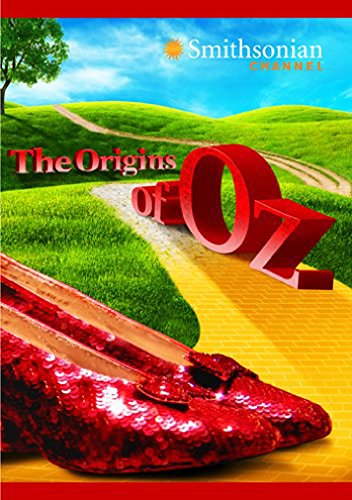
The Wizard of Oz (1939) is one of the most beloved films of all time. It is hard to believe that the movie was made over 70 years ago, as it remains a truly marvelous cinematic experience. The film was based on the book The Wonderful Wizard of Oz, written by L. (Lyman) Frank Baum (1856-1919). The new DVD The Origins of Oz tells the story behind “the first American fairy-tale.”
Former 10,000 Maniacs vocalist Natalie Merchant narrates this 46-minute documentary, and she is obviously a big fan of both the book and the film. At one point, she mentions that The Wizard of Oz has been seen by more people, more times, than any other. This is due to the fact that it has been a yearly television event since the 1950s. My first memory of seeing it was on our black and white TV, when I was probably four years old. Even in black and white, those flying monkeys scared me to death. When we got color a few years later, I was even more impressed.
Our elementary school library had many of the Oz books on the shelves. There were 18 in all, and they provided a steady source of income for the Baum family over the years. As the program explains though, back in the early part of the 20th century, the books were unofficially banned by many libraries. The supernatural nature of the stories presumably scared some of them off, and is one of the many parallels between Baum’s books and the modern Harry Potter series.
The Origins of Oz is mainly a biography of L. Frank Baum. It appears that he had an idyllic childhood, and much of the wonder of Oz was based on memories of his young life. His father was a successful businessman, and the family lived comfortably. Baum developed an interest in writing early on, and kept many journals. After marrying Maud Gage, the couple moved to South Dakota, and opened a store.
They also tried farming, but neither the store nor the farm work out, so Frank turned to writing. He edited the Aberdeen Saturday Pioneer newspaper, but it folded after a few years. Writing did seem to be his strong suit though, and after the newspaper, the family moved to Chicago. It was in Chicago where his first book was published, a collection of Mother Goose fairy-tales. This was followed by a similar Father Goose title. His third book was The Wonderful Wizard of Oz, which was first published in 1900. It proved to be a big hit, and was followed by 17 more Oz books, three of which were published posthumously.
The success of the books gave the Baums financial security, and they decided to move to southern California. The place they chose was in a former orange grove. It was an early housing development, and even had its own name, “Hollywood.” Baum noticed that many people in the area were working in film, and decided to open his own company. The Oz Film Manufacturing Company was formed in 1914, and produced a total of five silent films.
L. Frank Baum died at the age of 62, in 1919. Nearly 20 years later, MGM paid the family $40,000 for the rights to The Wonderful Wizard of Oz. The documentary presents some intriguing trivia about the film. For example, it appears that the crew had a lot of trouble when it came to filming the fabled yellow brick road. They tried all sorts of paint combinations to get the bricks to appear yellow, with no luck. Finally, someone came up with the idea of just using regular yellow paint. As funny as it may sound, this was their last resort. As anyone who has seen the film knows, it worked out pretty well.
They also show one of the magnificent old Technicolor cameras, which ran three rolls of film simultaneously. I know that there are all kinds of reasons that the film industry uses CGI and other effects these days, but there is nothing like the look of a Technicolor film. I think it is unfortunate that the process has been abandoned.
Besides narrating the show, Natalie Merchant is also interviewed. It is not much of a surprise that the matronly Merchant offers up stories of how her own children have responded to the film. Other interviewees include theatre critic (and son of Bert) John Lahr, and Baum’s great-grandson Robert Baum, among others.
The Origins of Oz was produced by the Smithsonian Channel, and also features some of the items that are housed in the museum, including the famous ruby slippers. It may come as no surprise, but after watching this, I was moved to put on The Wizard of Oz, for what must have been the 50th time. It never gets old, and this documentary makes for a nice companion piece.